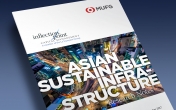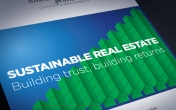Here Come The Sustainable Development Goals
The very latest “Really Big Thing” to hit the responsible and sustainable investment space is the United Nations Sustainable Development Goals (SDGs), an internationally agreed set of 17 worthy but incredibly ambitious goals which were adopted by world leaders in the fall of 2015, and came into effect in January 2016.
To give you some feel for the level of ambition attached to the SDGs, allow me to quote Goal #1: “To end poverty in all its forms everywhere.” Goal#2 is to eliminate hunger… and there are fifteen more besides. And if that weren’t ambitious enough, the target date for achieving them is 2030.
Over and above their startlingly ambitious nature, the SDGs have at least two notable characteristics:
- While in the first instance adopted by and targeted at countries, it is explicitly expected that the private sector must and will be heavily involved
- Unlike their UN predecessors, the Millennium Development Goals, the SDGs have attracted widespread interest not only from multilateral corporations, but also from large institutional investors.
To take just one illustration of this last point, a group of eighteen Dutch asset owners and managers with combined assets of well in excess of $ 500 billion have pledged publicly to build their investment strategies going forward around the pursuit of the SDGs.
This list includes APG, the largest pension fund in Europe. Another major Dutch fund, PME (€45 billion) has pledged to invest fully 10% of its assets in the SDGs over the next five years. Virtually every week at least one additional significant investor steps forward and pledges something similar. In short, the SDGs have real momentum among investors.
To my colleagues at Inflection Point Capital, one virtually overlooked but important feature of the SDGs is that they represent a significant paradigm shift concerning another rapidly-growing part of the responsible/sustainable investment ecosystem: “impact investing”. Up until recently, impact investing has typically involved small-scale projects, with investments through private companies. No listed companies are generally involved.
But the question is, with an estimated annual price tag for implementing the SDGs at $5-7 trillion per year, how can they possibly be reached unless listed companies take a leadership role?
To us at Inflection Point, the answer is a complementary approach which we have long called “Impact 2.0”.
Impact 2.0 is focused on investing in large and mid-capitalization, multinational corporations which are publicly traded. They are selected for portfolios partly but explicitly on the basis of the positive social and environmental impacts they can have.
Take for example, WalMart. There is no doubt that WalMart has a chequered history. However, in 2010, WalMart pledged to take some 20 million tonnes of CO2 out of its supply chain over the course of the next five years, and to have its performance monitored by respected environmental NGO Environmental Defence. More recently, they have upped the ante, and targeted further reductions of one gigatons of CO2 by 2030 – roughly the equivalent of the combined emissions of all of the passenger vehicles in the United States for one year.
Now that is impact.
So the message is simple: large international companies can have a major positive impact, and their investors, through engagement can play a huge role in ensuring that they do so. In the rush to embrace the SDGs as an investment framework (and some of the SDGs, such as clean energy and clean water, are clearly more investable than others), a largely unremarked but important shift from Impact 1.0 to the 2.0 version is now well and truly underway.
At Inflection Point Capital, we thoroughly applaud this evolution: not only does it promise positive impacts which will be orders of magnitude larger, but it has the potential to democratize impact investing and bring it within reach of a much larger investor audience.
Latest news
-
7 September 2017
-
26 June 2017
-
23 June 2017
-
18 May 2017



